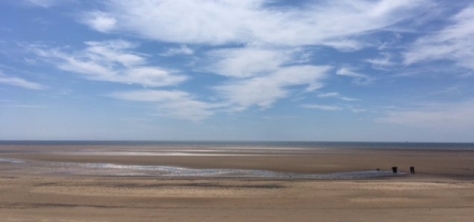Helen recently convened a symposium at the British Society of gerontology on ‘co-designing technologies with older people’. One of the attendees at the symposium wrote about the seminar in a blogpost. we’ve reposted it below. Thanks Karen for permission to repost here!
A good conference can help you re-assess your own work. Perhaps not in an extreme way. Perhaps more as if a torch has been aimed loosely at some previously dim and dusty corner. Sometimes a single phrase in a presentation will do it, or conversation outside the official business of the event, in the sun, over a glass of wine, say.
I wouldn’t have been surprised if the latter had happened more than once during this year’s weather-blessed annual BSG Conference 2017 in Swansea. However, for me, attending my first (but certainly not last) of these events, the lightbulb moment came in a symposium led by Helen Manchester on the subject of co-designing creative technologies for later life. Manchester cited Myriam Winance’s wonderful definition of ‘care’ and I have been carrying it around in my head ever since:
‘To care is to tinker, i.e. to meticulously explore, “quibble,” test, touch, adapt, adjust, pay attention to details and change them, until a suitable arrangement (material, emotional, relational) has been reached.’ (Winance, 2010, p. 111)
My own doctoral work explores the methodological challenges of researching and evaluating arts activities intended to enhance the health and wellbeing of the community of people affected by dementia. I am interested in ideas of co-production in research and implementation of arts activities themselves. I am looking at how we uncover the mechanisms for changes that occur when an artist and people with dementia ‘do art’ in the kinds of varied and complex contexts in which arts activities take place. I am hopeful that we will find ways to recognise, capture and evaluate these changes more effectively.
I have been interviewing artists who work with people with dementia, as well as those who manage, organise, fund and commission and research or evaluate such work. Artists draw attention to flexibility and the interdependence of elements in their practice. They refer to the affective and material relationships that develop both between those involved in an arts activity and with the artistic and technical resources used. They will also often talk about the collective character of artistic encounters. A good artist, working with people with dementia, will ‘care’ in just the way that Winance describes.
Manchester and other speakers in the symposium spoke about the methodological implications of their work for co-production with people with dementia, including the need to challenge disciplinary assumptions and boundaries. All of this has pointed me to a new set of ideas I can use to explore my subject.
So, for me, the three days of BSG 2017 would have been well worth it for these thoughts alone. However, there were plenty of other highlights. In her keynote on the first day, Dawn Brooker, reflected on various elements of post-diagnostic support for people with dementia and their families, talked about her work on the Meeting Centres support programme, and reminded delegates that, rather than ‘us’ and ‘them’, there should only be ‘us’. She cited the Dementia Action Alliance’s new Dementia Statements, a rallying call to improve the lives of people living with dementia and to recognise that they shouldn’t be treated differently because of their diagnosis.
The ambitious cARTrefu Project has seen over 1000 art workshops being delivered in care home across Wales between 2015-2017 and Kat Algar-Skaifepresented exciting preliminary findings from the evaluation. Julian West and Caroline Welsh described their intuitive, adaptable, improvisational work as professional musicians on Wigmore Hall’s long-running Music for Life programme of creative workshops in care settings with people with dementia. Lots more caring and ‘tinkering’ going on in both these places, I noted. There were also interesting presentations on visual and arts-based methodologies, particularly useful in eliciting responses from research participants that might not otherwise be possible.

One of the joys of a conference spread over three days and with such a diverse programme, is that you are able follow your own interests AND leave space for the unexpected. In the last session I attended, Joachim Duyndammade an argument for the resilience-enhancing power of moral exemplars for older people. He introduced me to a series of photographic portraits – The Widows of Rawagede by photographer Suzanne Liem – capturing the faces of women who sued the Dutch government for war-crimes against their husbands committed in 1947. These hauntingly beautiful images will stick in my memory for a long time.
I also had the opportunity during the conference to present my own work in progress to a generous and thoughtful audience and to have a good discussion afterwards. The vast expanse of the University of Swansea’s Bay Campus beach, minutes from the main conference hall, let us all feel warm sand beneath our feet in between sessions. Both the catering and social activities were excellent and the academic programme over the three days was tightly and interestingly scheduled. I am very grateful to the BSG Bursaries Panel for the generous award which enabled me to attend.


